Most people dream of the ‘vacation of a lifetime’ in Mykonos with its iconic windmills. Or, Santorini, its glistening white churches with blue domes beckoning from high above the sapphire sea.
As we sail along the channel between, Greece and Turkey toward the island of Lesvos, I reflect on how it is almost ‘just life’ for me to be traveling the world. I’ve been to 73 countries. In a few days, when we sail into Turkey, it will be number 74! It’s been on the bucket list a long time, as were the aforementioned Greek islands. Greece has over 2000 islands of which only 170 are inhabited. I’m about to see my 33rd and each is completely unique—like proverbial snowflakes. When I’ve asked other sailors which is their favorite, they say ‘all of them!’
I, on the other hand, do have favorites, only two of which you may have heard of.
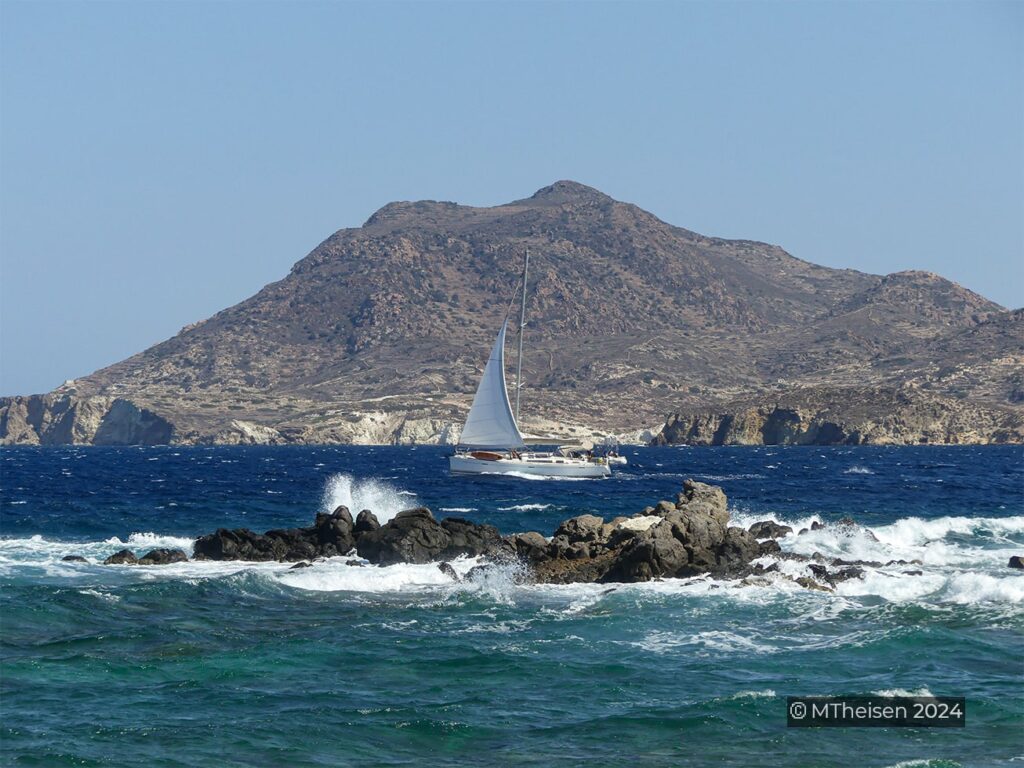
The first is Santorini, officially called Thera. What do I love about it? As we sail towards it, I observe the mountains appear to be inexplicably snow-capped, ice crystals glistening in the sun. On closer inspection, the famous white villages emerge, precariously perched on the tall volcanic walls.
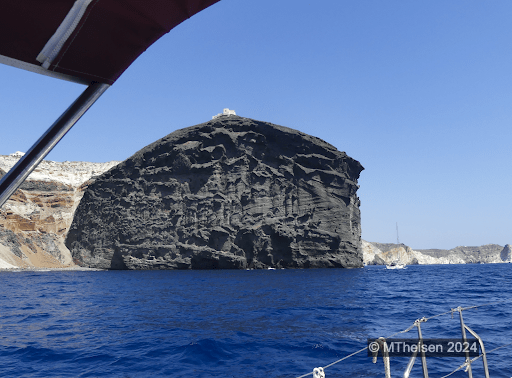
Yes, the bleached villages, Orthodox churches and famous climbing donkeys remind me of travel photos that sparked my fantasies.. But it is a profound experience to sail across the massive crater, with smoldering mini islands of volcanic rock greeting us as though we are arriving on another planet. The varied colorations and unique shapes of the hardened lava should top the list for any natural history buff.
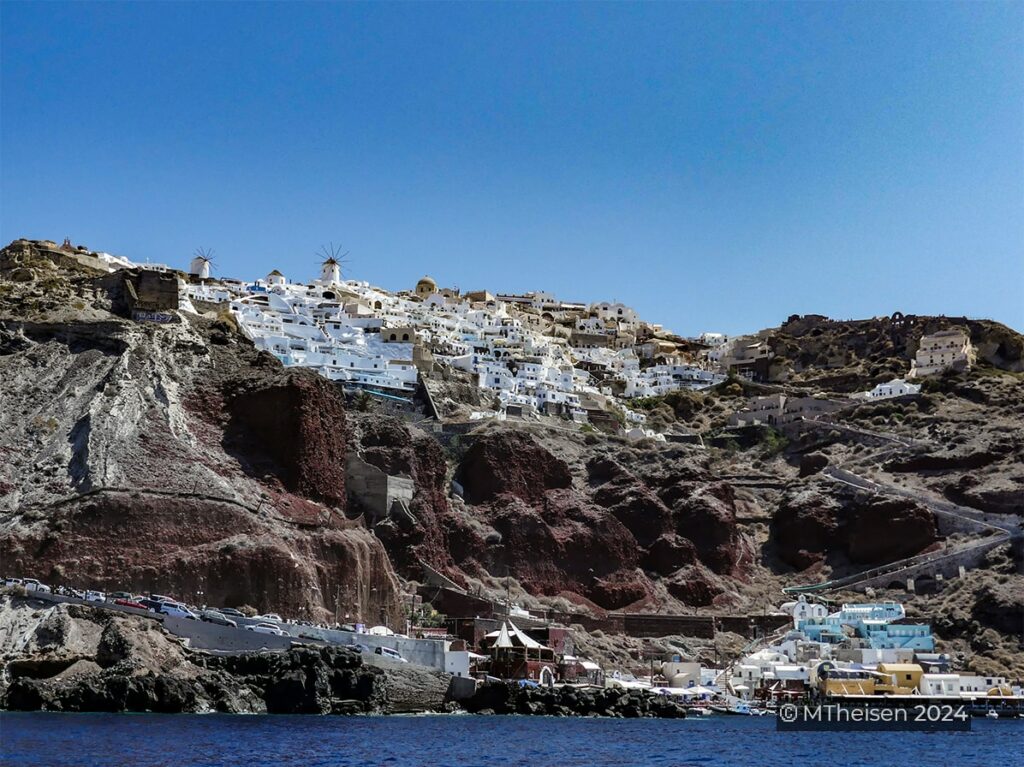

Historians would be awed by Akrotiri, a Bronze Age Minoan village and important archaeological site bearing the name of the ancient little known goddess. Its sophisticated multi-storied buildings were decorated with exquisite frescoes and filled with high quality furnishings and ceramics and it reveals an elaborate drainage system. This UNESCO site is also known as Little Pompeii because it was covered in ash, like its Italian cousin.
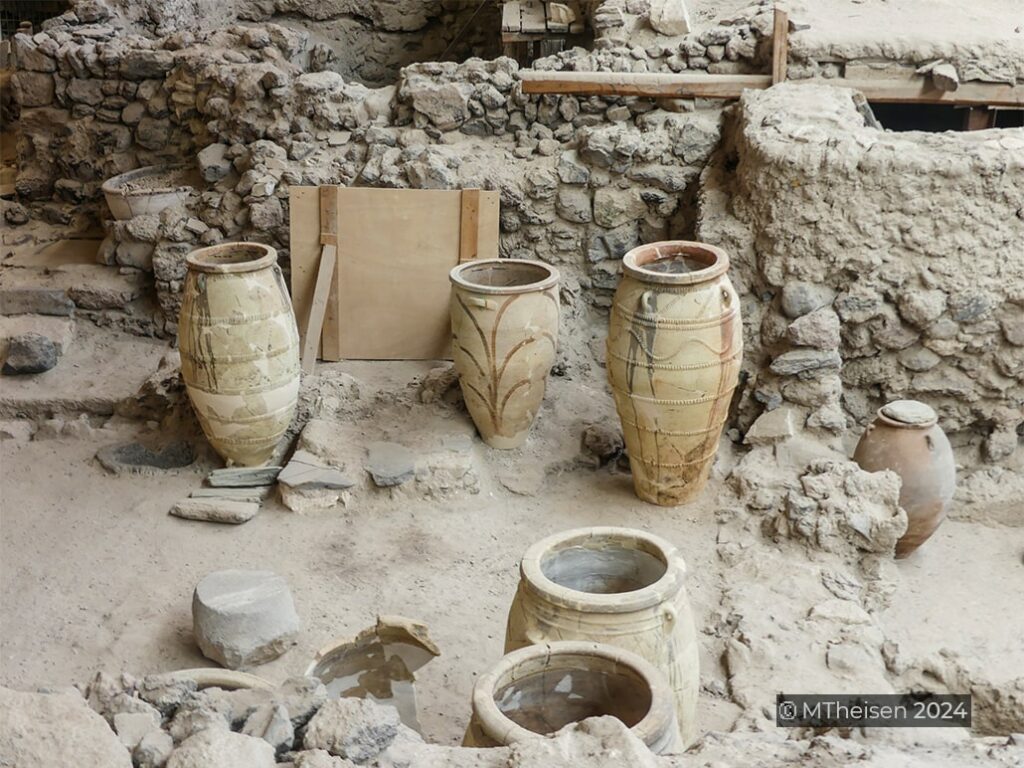
I’ve never seen anything like the wine cultivation on Santorini. Because there is very little rain, the vines are cradled in baskets on the ground, rather than trailing up a stake, so every drop of moisture can assist them in making the island’s Vinsanto wines. Wine aficionados appreciate the late harvest of sun dried grapes which age for two years in oak. The flavor is indescribable!
Yes, Oia is a perfect town from which to watch sunset. You have seen iconic photos of it, but people don’t talk about Fira, the capital. It too has the charming architecture. It is a much bigger town, with more to offer in terms of history, shopping and activities.
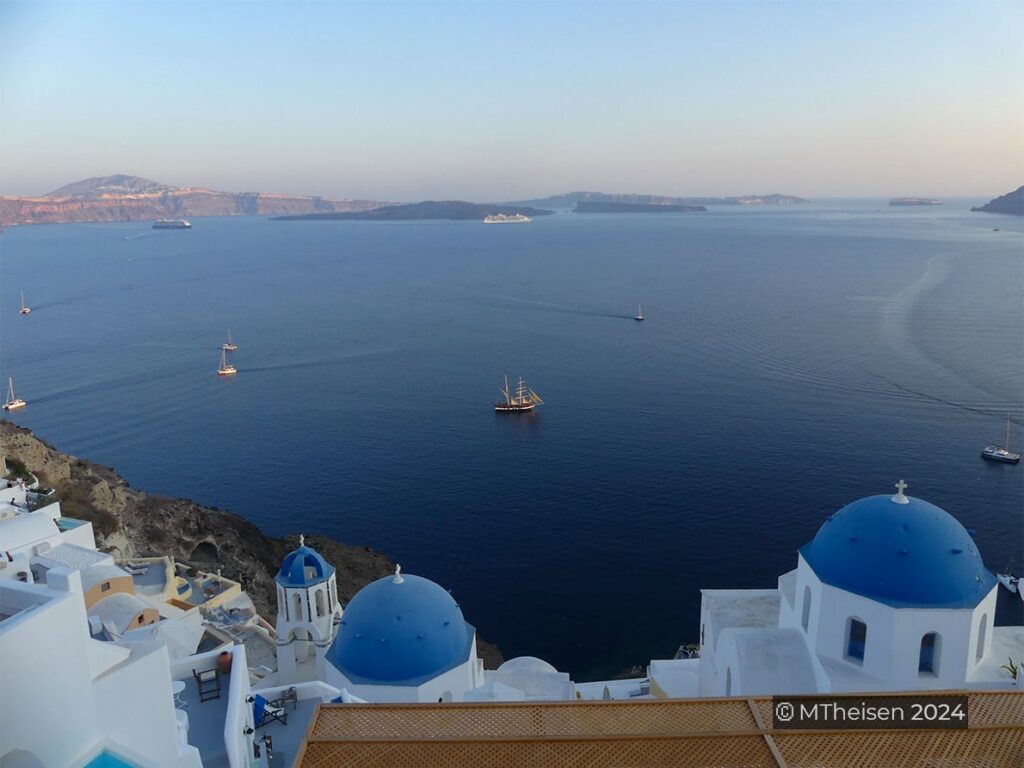
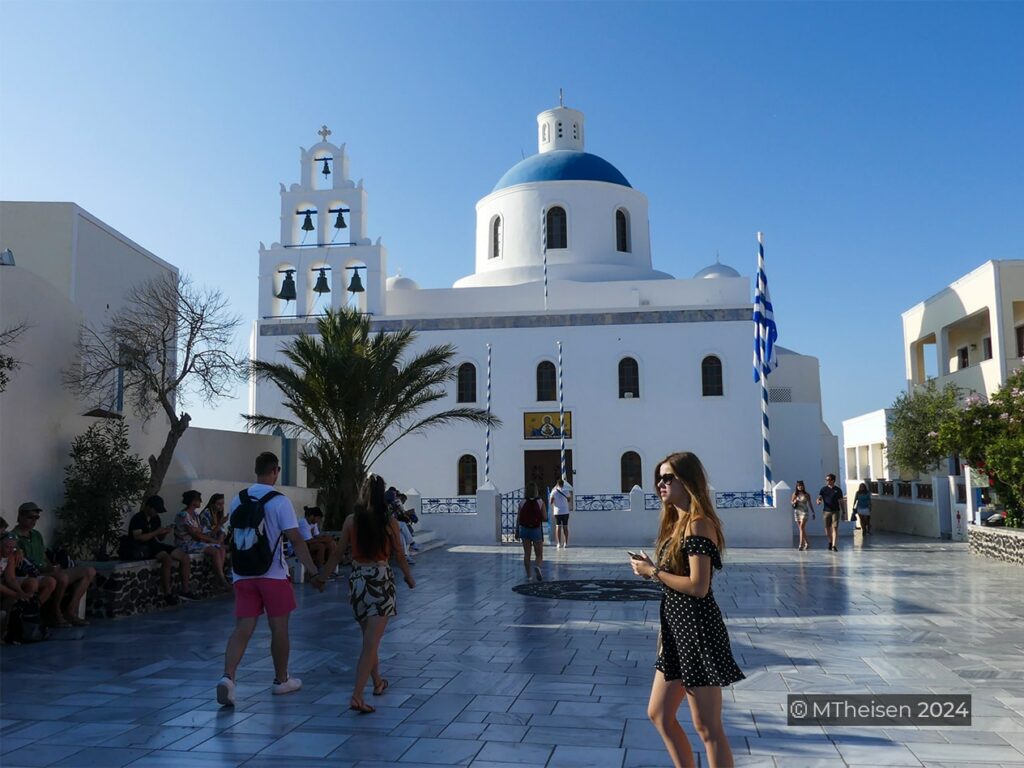
I opted to walk down the mountain and back up, rather than ride the famous donkeys. There is a lot about animal cruelty online and, while I saw some that didn’t seem hot and exhausted, I chose to exercise my own body.
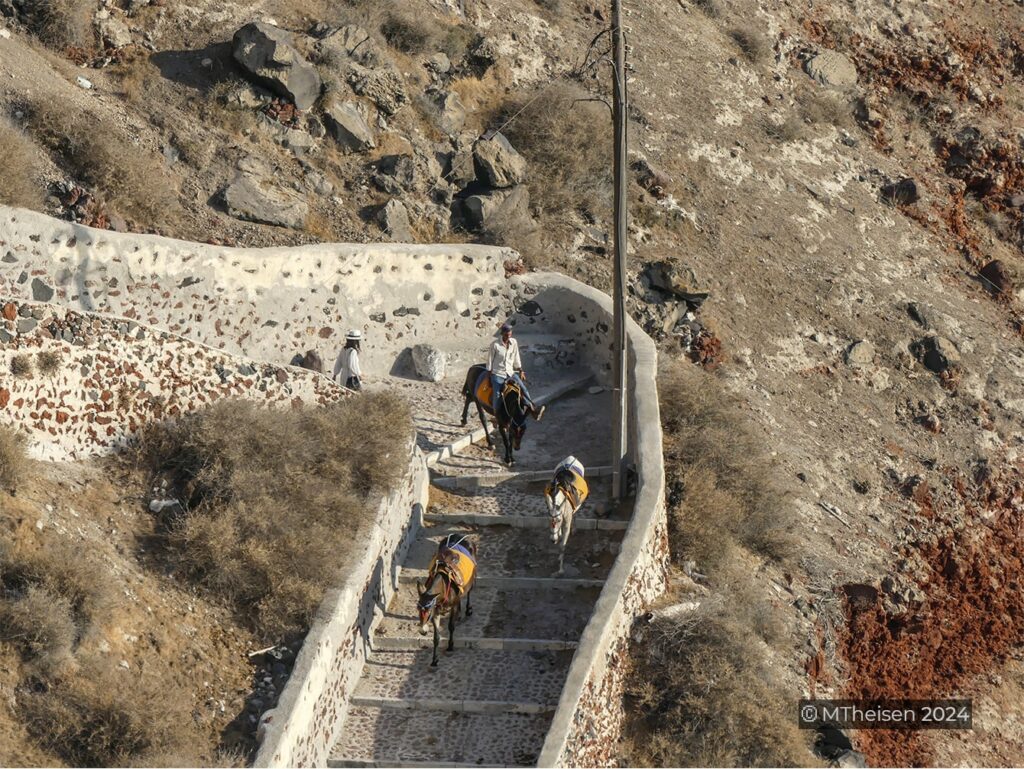
There is much more to say about Santorini and you will find it online or in guidebooks (https://www.visitgreece.gr/islands/cyclades/santorini/). I am moving on to some of the less famous islands, which I favor because they are accented by quaint homes and the kindest people you will ever meet… and few tourists to crowd them.
Have you heard of Milos?
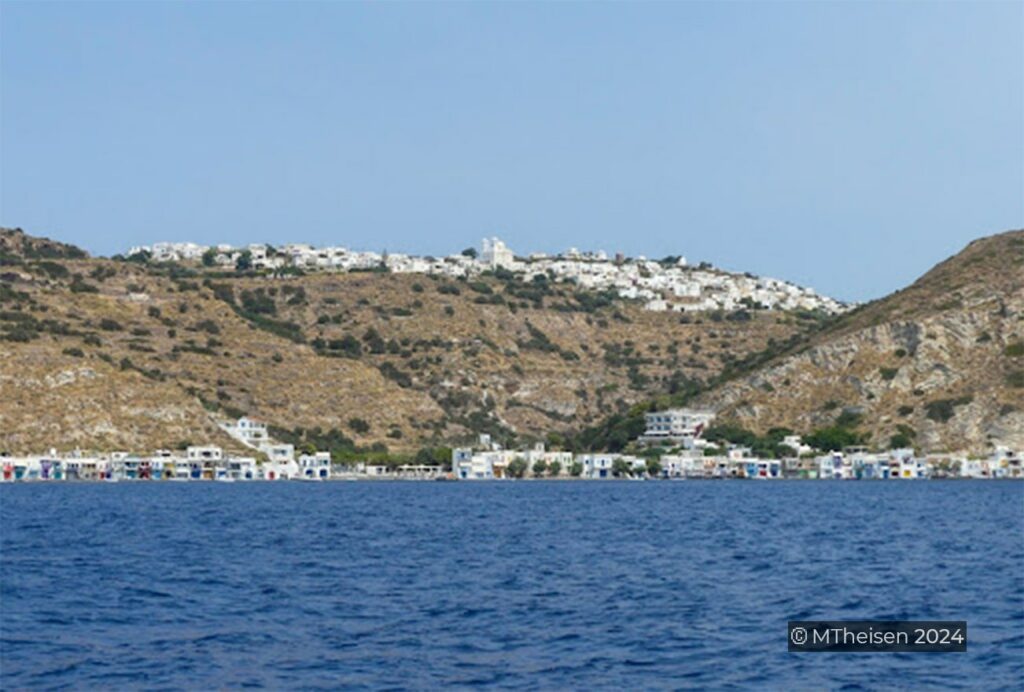
It was home to the famous Venus de Milo (Aphrodite de Milos) sculpture which was fought over by the French and Turks. Milos is another geological wonder, an ancient volcano, with wind blown white stone, historic sulphur mines, and a cache of other minerals. Alum, barium, sulphur, and kaolin are still mined. It also has pumice, alunite, perlite, bentonite and manganese. I enjoyed picking up pieces of obsidian, nature’s glass, on the beaches, only later to discover Milos is the richest and best source of obsidian in Eastern Europe. It was prized during the stone and bronze ages for making weapons and tools.
Milos was home base for a few weeks of sailing, and we got to know it and its people well.
Milos was my favorite island for outdoor activities. Swimming in the thermal waters in the sea is a treat! The beaches are delightful to see and swim from. I relished hiking in the mountains and the stark white, wind smoothed formations on the south shore. What glorious views of the surrounding islands!
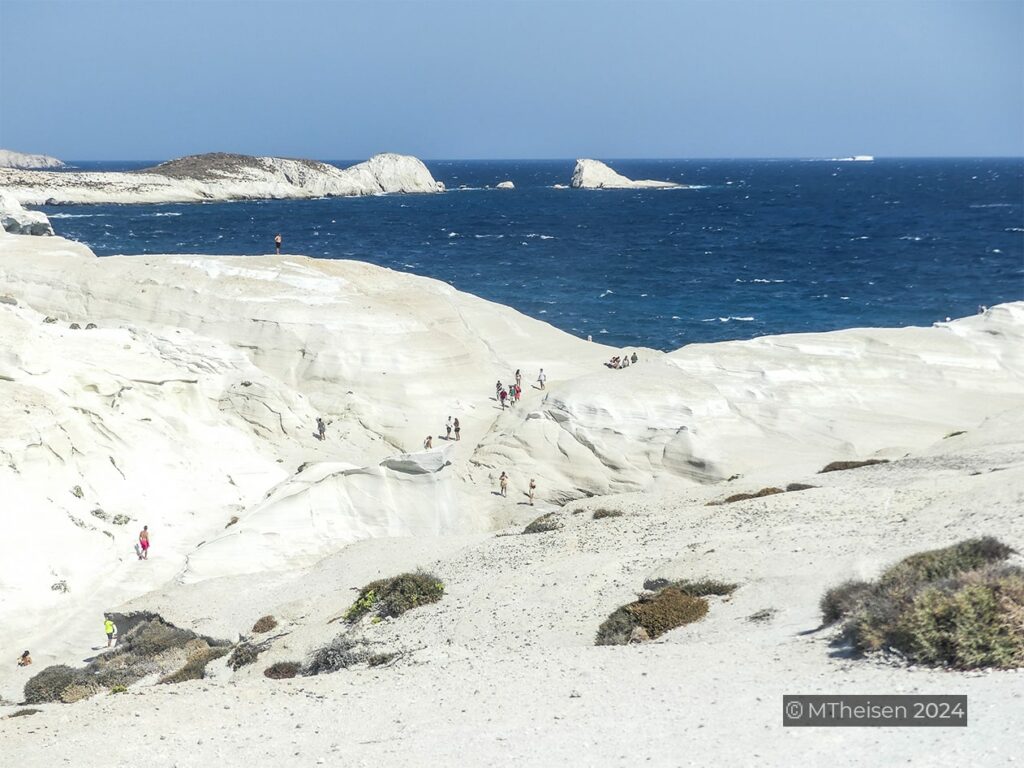
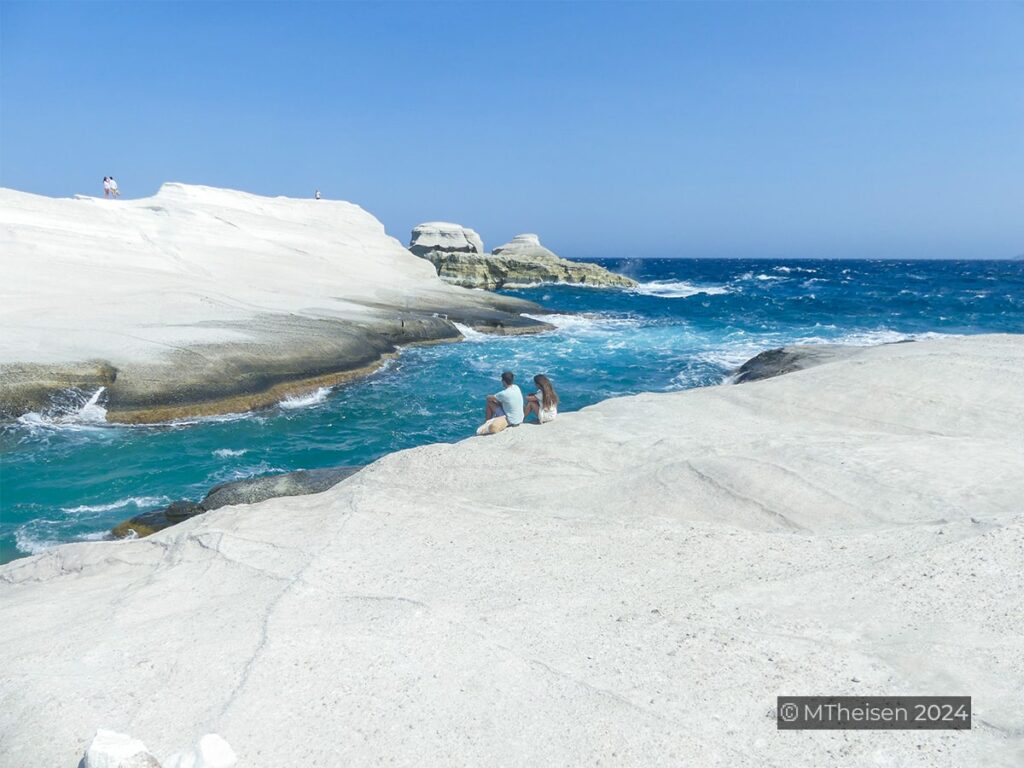
I felt like a child exploring the derelict sulphur mine on a southern beach. This massive array of buildings, equipment and railroad track told stories of a productive and prosperous time in the past.
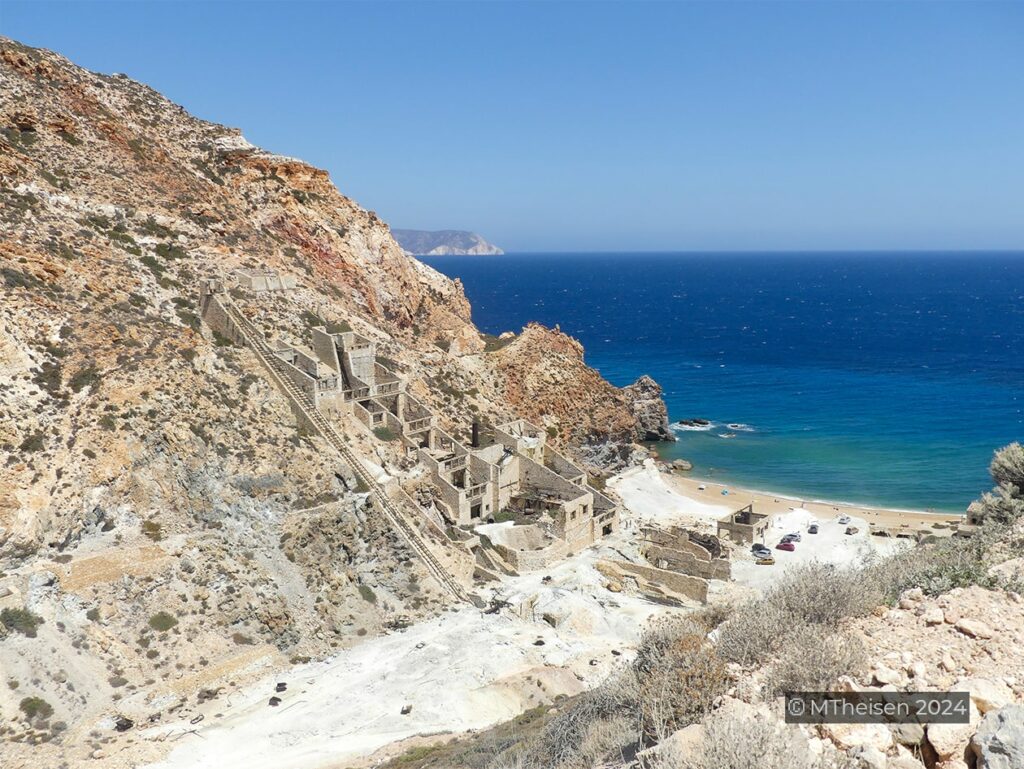
The historic fishing village of Klima is both picturesque and quaint. Its whitewashed stone cottages, called Syrmata, are accented with brightly colored balconies and doors. Traditionally, the boats were stored on the first floor, to protect them from being stolen by pirates. The top floor was used as a residence. The door was painted the color of the owner’s boat which was stored inside. Most have been converted to B&B’s, perfect for those who want to get away from the towns and villages.
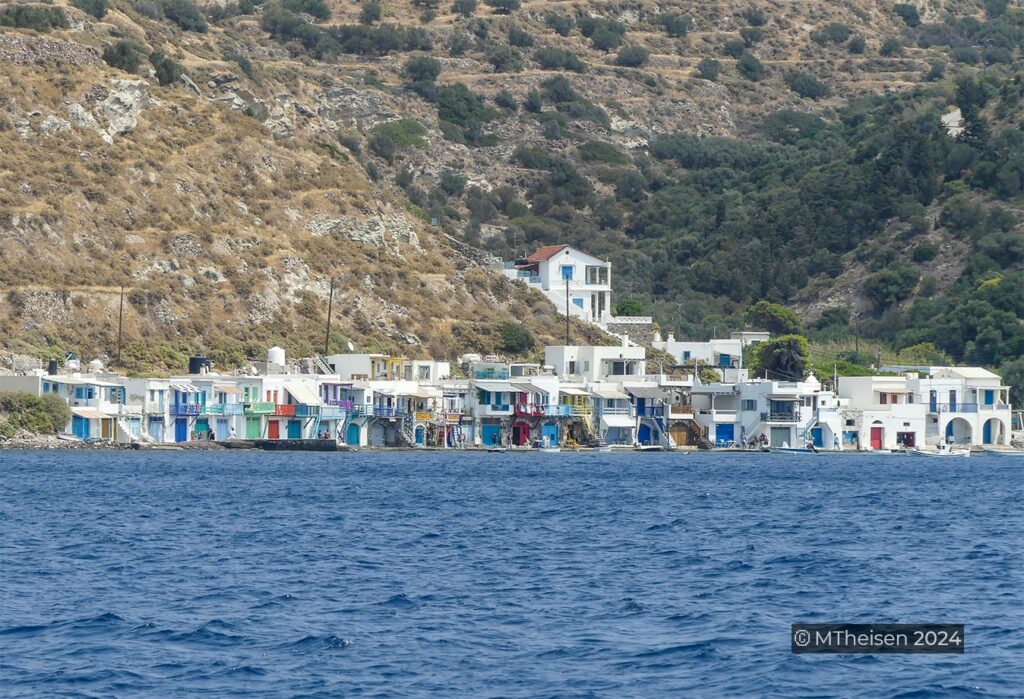
The archaeological site of Phylakopi is worth a visit. Built in 1360 BC, this Mycenaean village was one of the most important Bronze Age settlements in the Aegean. Its most important find was the Lady of Phylakopi, a wheel-made pottery figurine of a goddess or priestess. You may see her at the Archaeological Museum of Milos.
Both our fun crew members , and wonderful local friends added to our magical time in Milos. One such friend was a local jeweler who shared his obscure theology with me, and later gave me a silver ring that he made. I wear it daily.
History is evident everywhere as well: a well preserved Roman amphitheater, mysterious underground catacombs, and a Venetian castle are only a few of the treasures you will discover.

More at https://www.visitgreece.gr/islands/cyclades/milos/
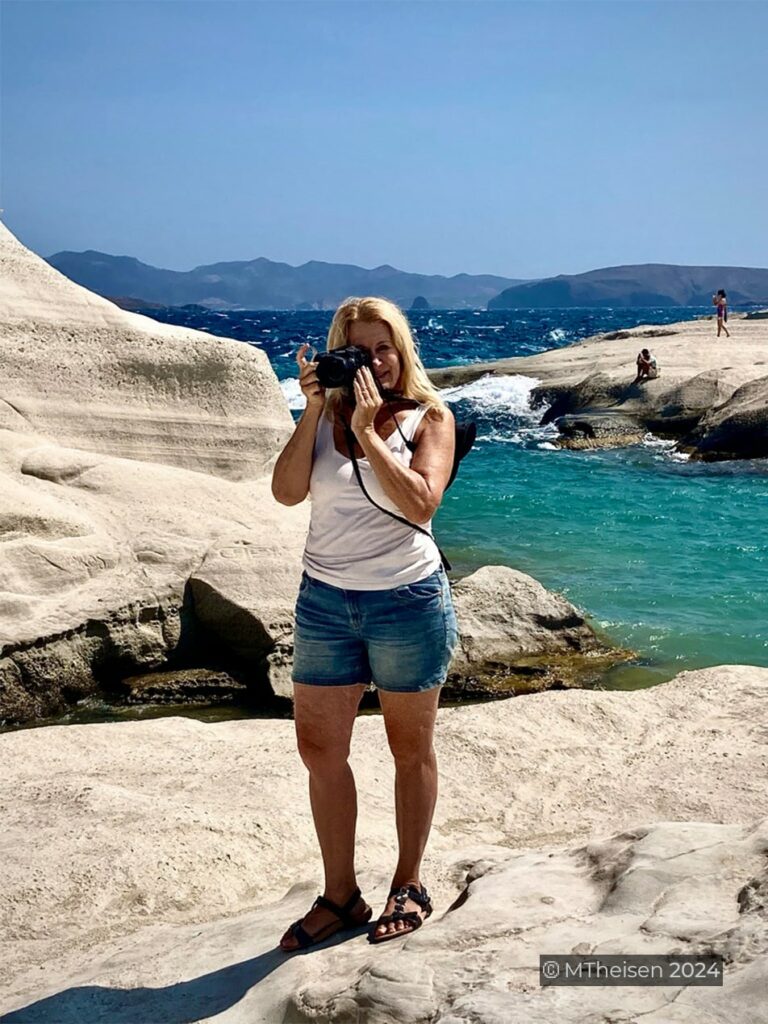
Remember the Venus de Milo? Well, she was carved from the iridescent white marble of Paros, another island in the Greek Aegean.
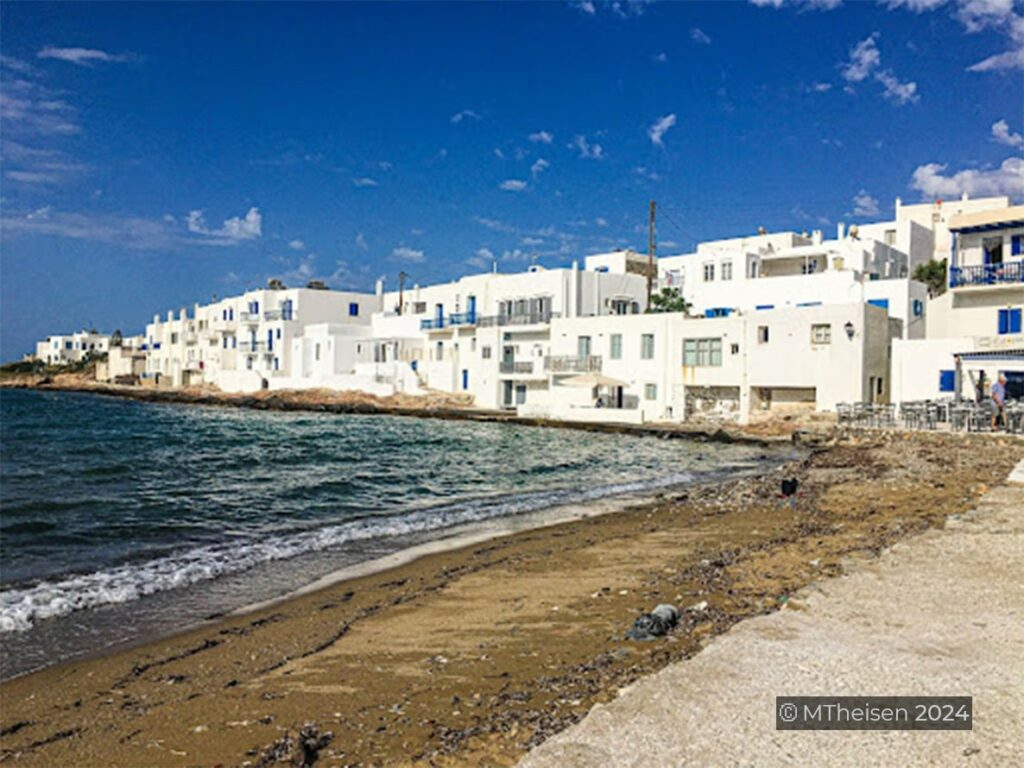
Four of us rented scooters and buzzed about the island. In Parikia village, we were fascinated by the Frankish Castle, constructed in 1260 AD of stone harvested from ancient buildings that previously existed on the hill, including the 6th century Temple of Athena—marble slabs, round mill stones, a mantle from a hearth, polished egg-shaped stones, prehistoric hewn rocks—perhaps a more befitting home for circus performers than royalty? I am both bemused at its whimsy, and horrified at the desecration of the ancient sacred site.
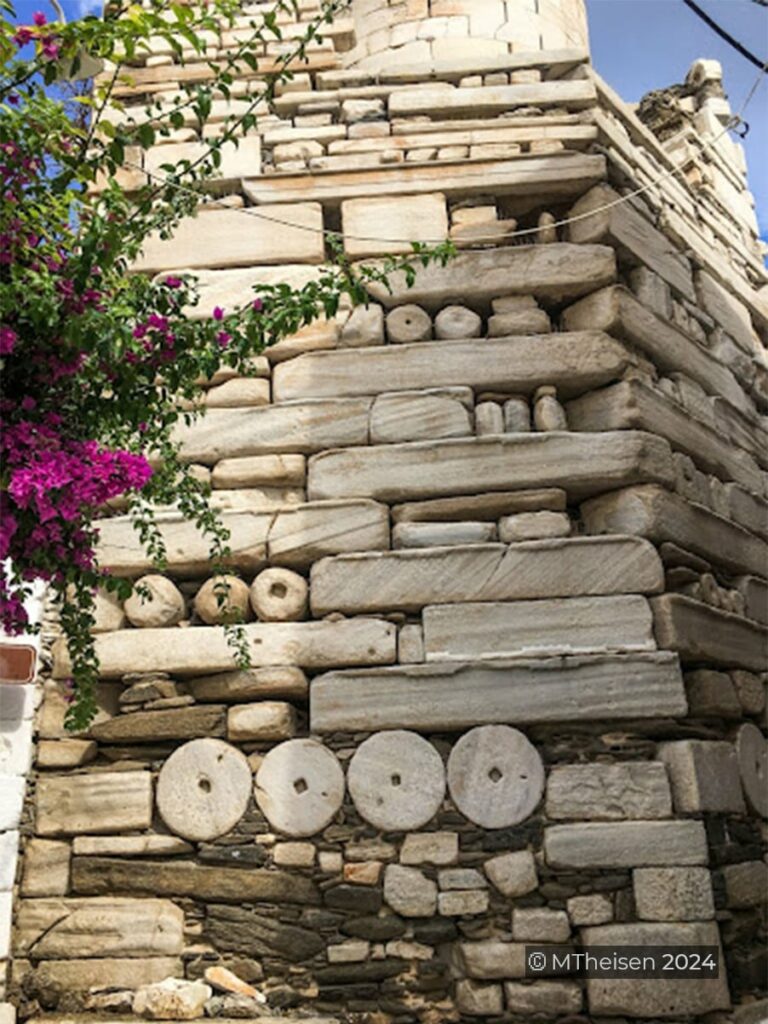
You can still see vestiges of the Ionic temple. Because Athena was the patroness of the city of Paros, her temple was magnificent. Sadly, the facade and the greater portion of this structure were destroyed when a landslide carried it into the sea. Part of the foundation of the temple is now connected to the church of St. Constantine and Helen.
The quarry where the marble was sourced for Venus and other sculptures is still there. An unassuming tradesman lives nearby in a small home, surrounded by machines, tools, piles of rock and his projects, all in various states of completion. After an informal tour in Greek, we all buy small pieces from him. Two years later, we are back with more friends, and he is thrilled to see my photos from the previous visit.
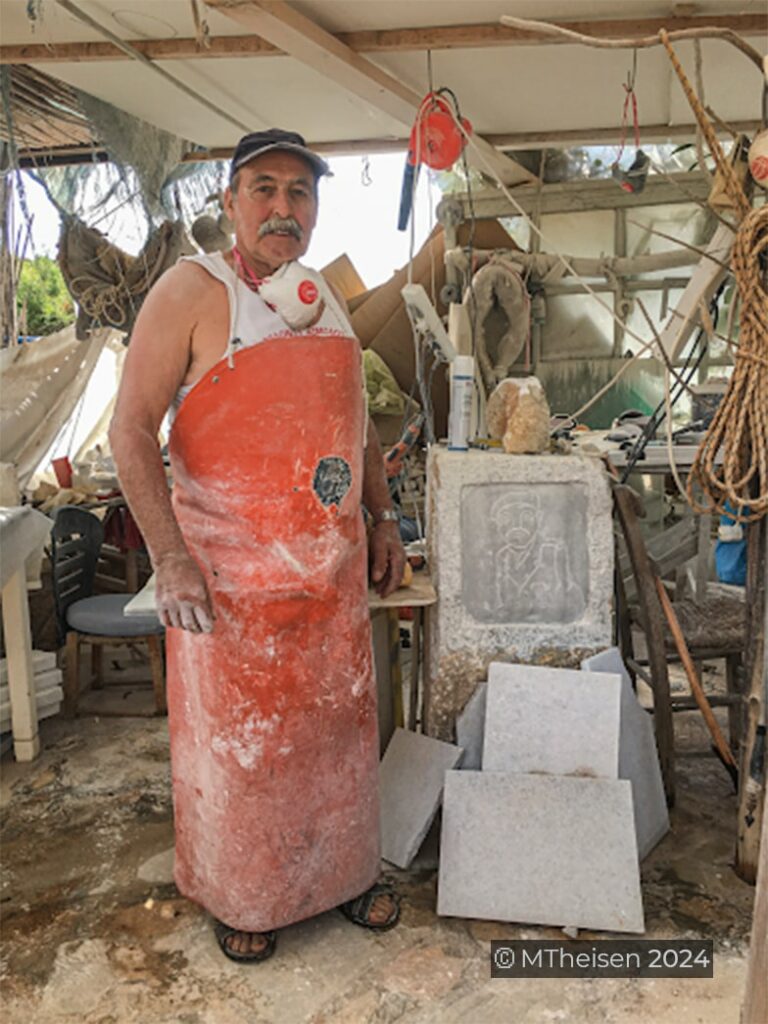
The Archaeological Museum houses wonderful Ancient Greek and Roman treasures, including carved marble funerary stelae, intricately painted pottery, iridescent glass bottles, and unusually painted amphorae in the unique geometric style of the 8th century BCE. Cycladic sculptures, also stylized, have an almost extra-terrestrial look about them, with large flat faces. But my favorites are two statues: The first, a young goddess Artemis, her long locks flowing beneath her regal headdress. Her sanctuary on Paros fared better than Athena’s, having been excavated in 1899. The other, an imposing Gorgon or Medusa, with wings spread wide, streaming dreadlocks and a snake encircling her waist. These rich archetypal images feed my soul and I have related to their symbolism since before I was in high school. Indeed, I use the images in my Jungian-oriented psychotherapy practice.
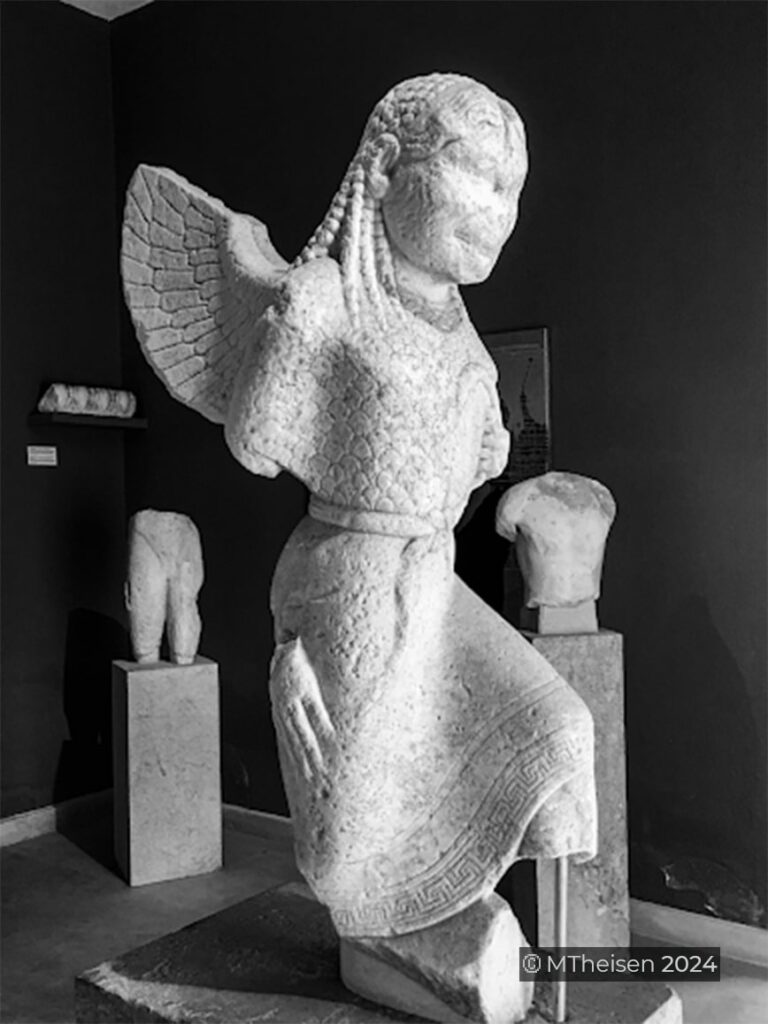
Vasilis, a kind man at the museum, suggests a stop at the Monastery and lunch out in the country side. We putter along the winding roads, through grassy hills affording sweeping views of the sapphire Aegean Sea. Fields of farmland checkered with groves of centuries’-old olive trees, ripening in the summer sun, promise delicious cuisine for more centuries to come. Small patches of forest conceal small island creatures. And windmills! The windmills, rendered in white-painted stucco, with blue roofs, evoke romantic fantasies of what life was like on this beautiful island. Groves of olive trees, ripening in the summer sun, promise delicious cuisine for decades to dome.
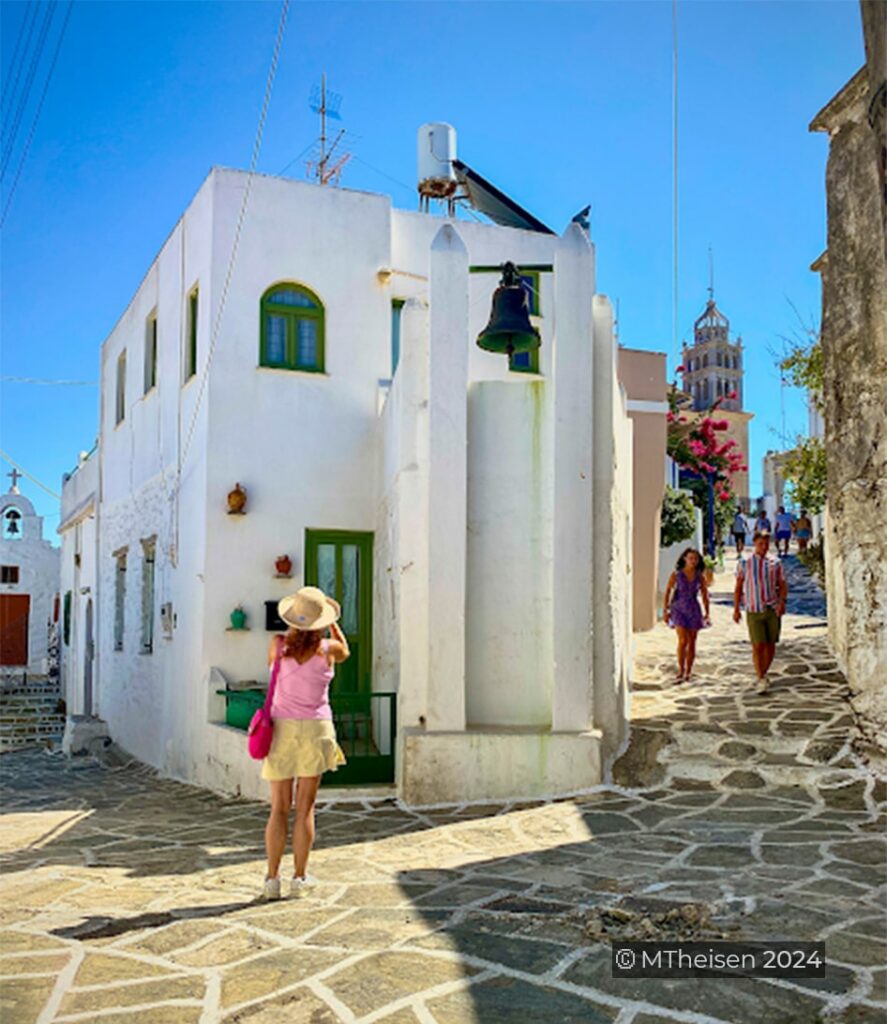
After a tasty lunch of Greek salad, saganaki and lamb gyros, we stumble upon a butterfly farm! Walking among the lush trees, we are treated to the joyous fluttering of hundreds of Panaxia, their zebra—like wings in stark contrast to the green leaves on which they light.
Perhaps you are noticing a theme? We typically avoid guidebooks and tours, though they do have their place. I prefer the excitement of unfolding surprises and miracles.
More at https://www.visitgreece.gr/islands/cyclades/paros/
Another surprise?
Samos!
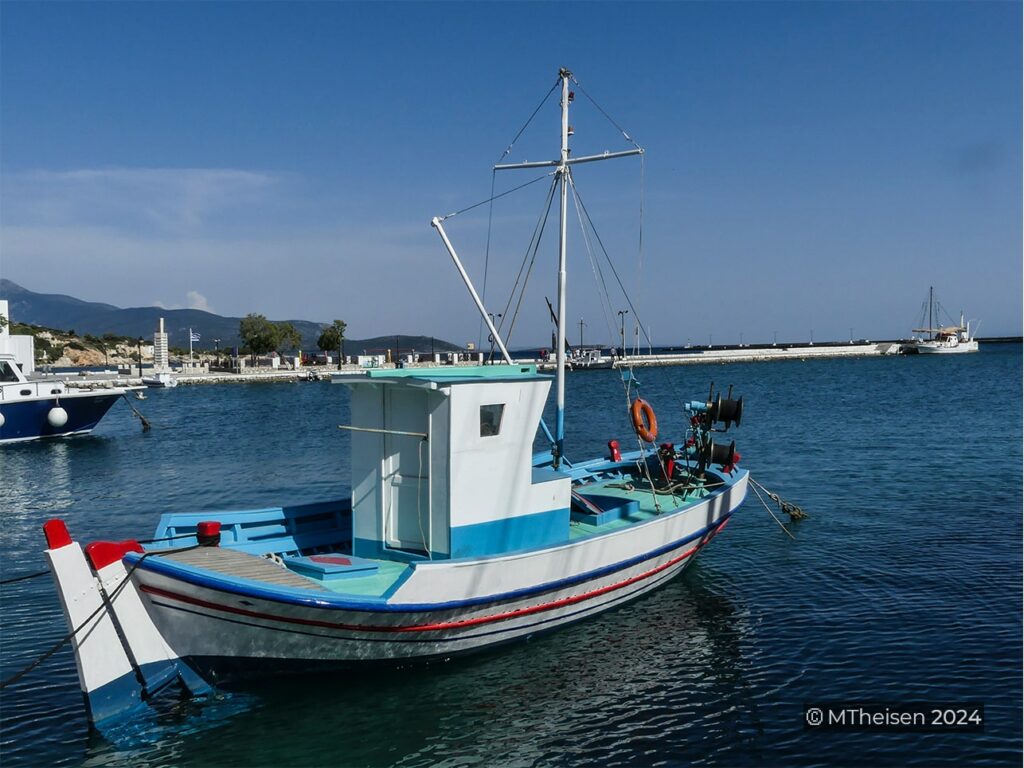
This darling gem is only 1km (1/2 mile) from the Turkish border in the Northern Aegean Sea. The islands in this region are less dry and therefore have thriving green forests. The architecture does not feature the white stucco and blue roofs of the southern or western Aegean; instead, homes are built with rough hewn stone in beige or gray. Monasteries alternate stone with geometric patterns of brick.
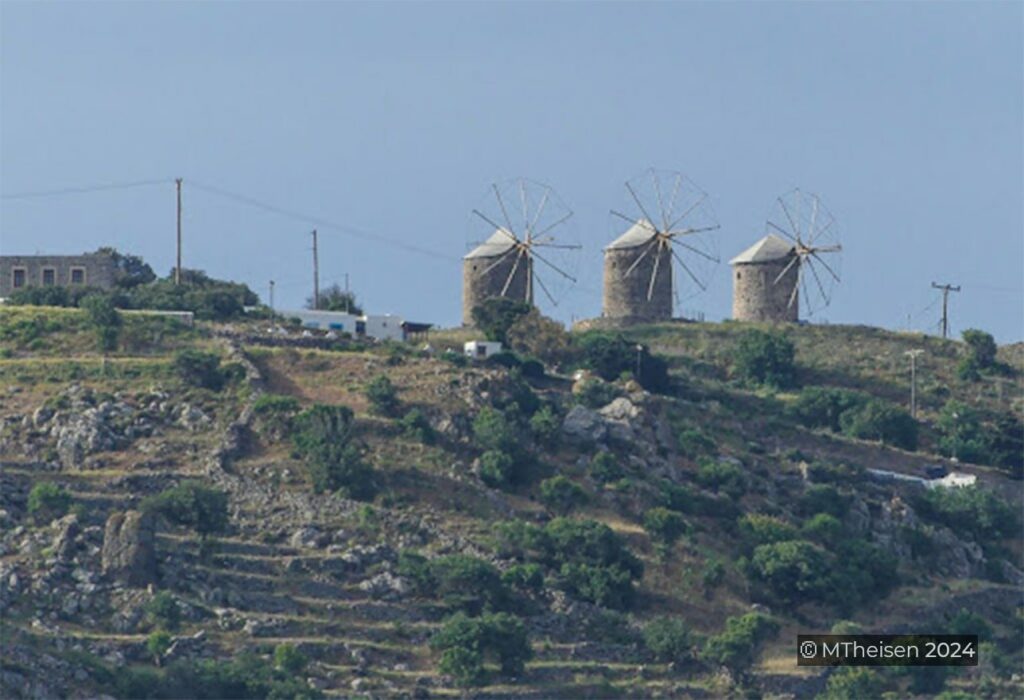
Samos is known to be the island of Pythagoras, the mathematician who was born in 582 BCE. The town of Pythagorio is a vibrant beach village and my favorite on the island. We were treated by dozens of Mediterranean dolphins, leaping and ushering us as we sailed into Pythagorio harbor. Once there, we were warmly greeted by the locals, who shared meals with us, brought us gifts, assisted with procuring boat repairs and showing us the sights. In fact, we felt so welcome each time we sailed there, that each crew had fantasies of purchasing property there
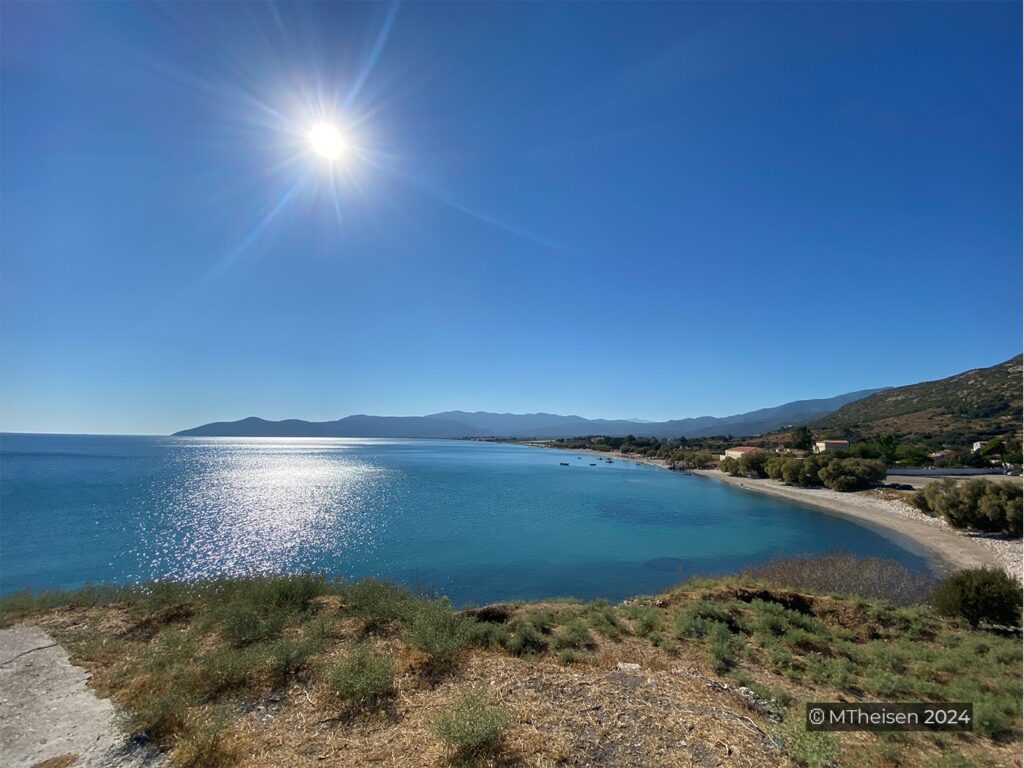
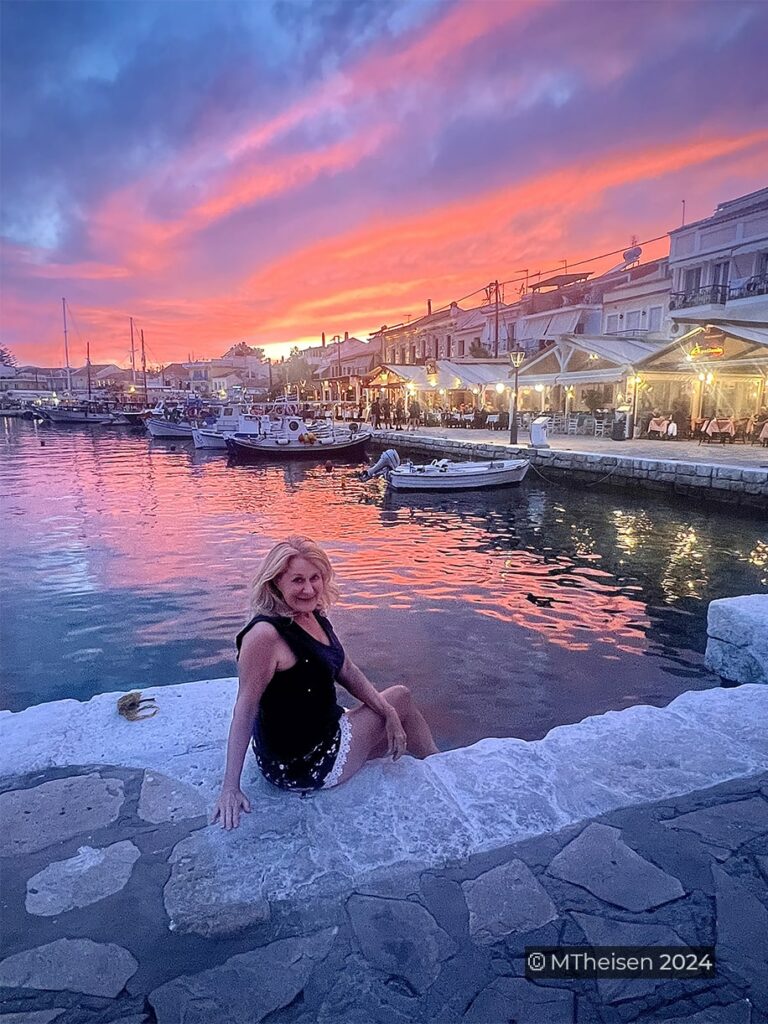
Vathy, also known as Samos town, is the capital and largest village. I enjoyed shopping and we also met the ferry here to deliver cushions we had ordered for the boat. Because a foreign border is very close, the EU provides a lot of support in monitoring boat traffic in the area. I was fascinated to see Greek, German and Italian coast guard boats there. Museums, restaurants and cafes are abundant here.
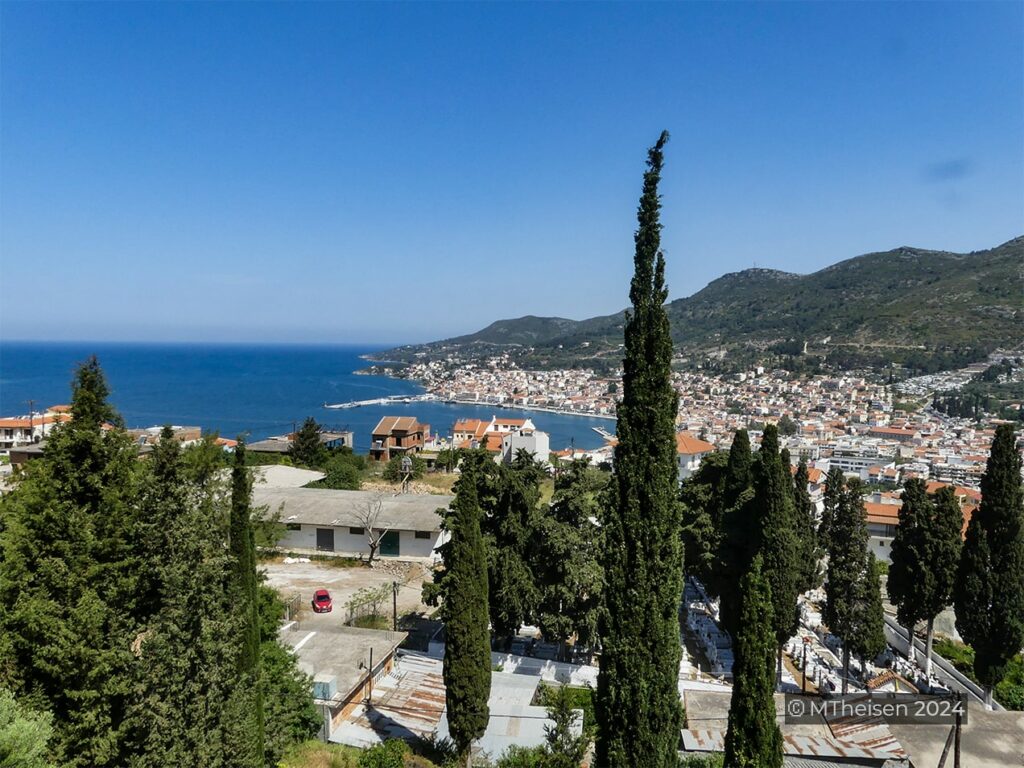
In general, the mountain villages are quaint and intriguing. Manolates must have been deserted before artists began moving in; galleries and cafes alternate with ruined hovels. It is a photographer’s dream! I did buy a pair of colorful papier-mâché earrings there, shaped like paper sailboats. I would have loved exploring its winding alleyways much longer.
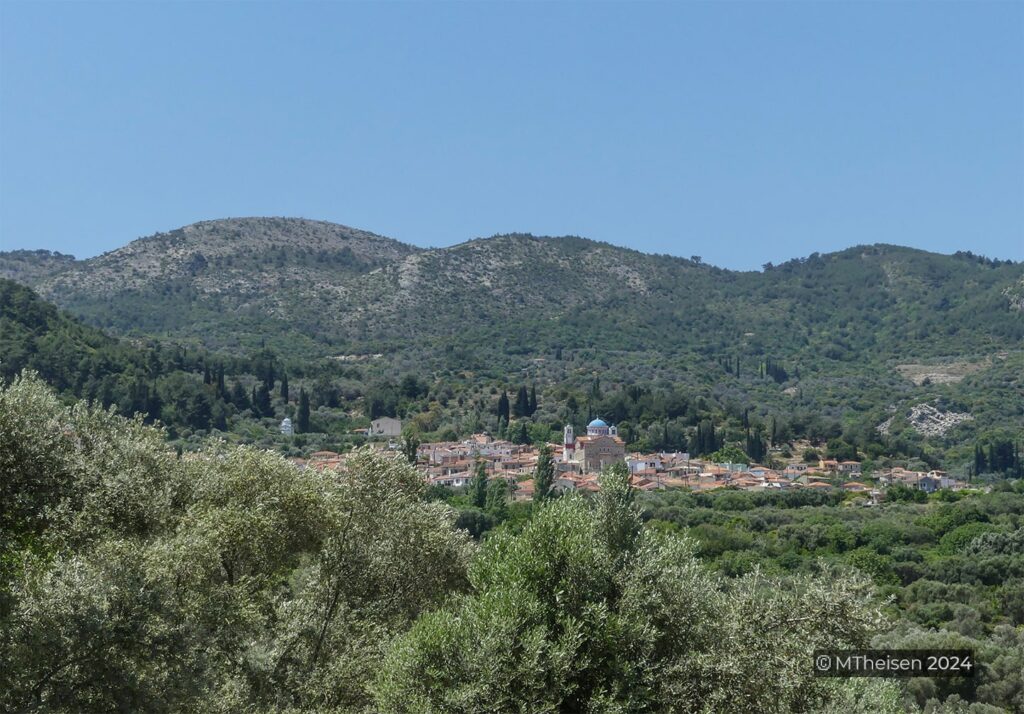
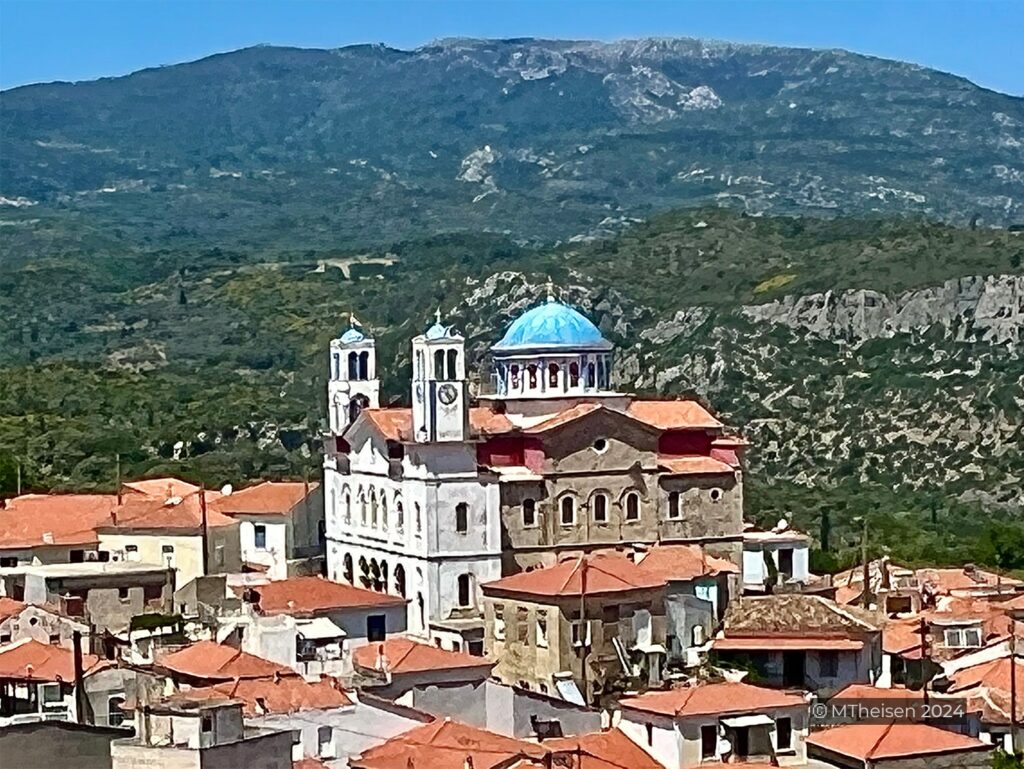
Kokkari is a picturesque beach village with fishing boats and tourist yachts. Karlovassi features beautiful mansions set among the forests. Marathokabos stretches from mountain churches down to beach bars.
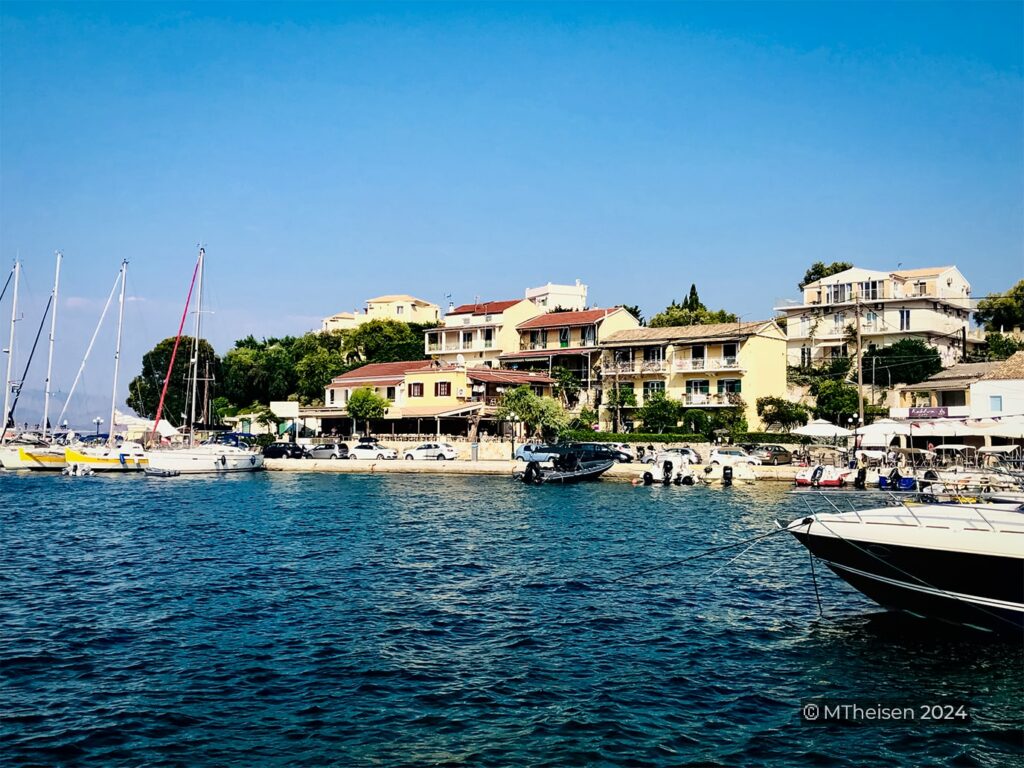
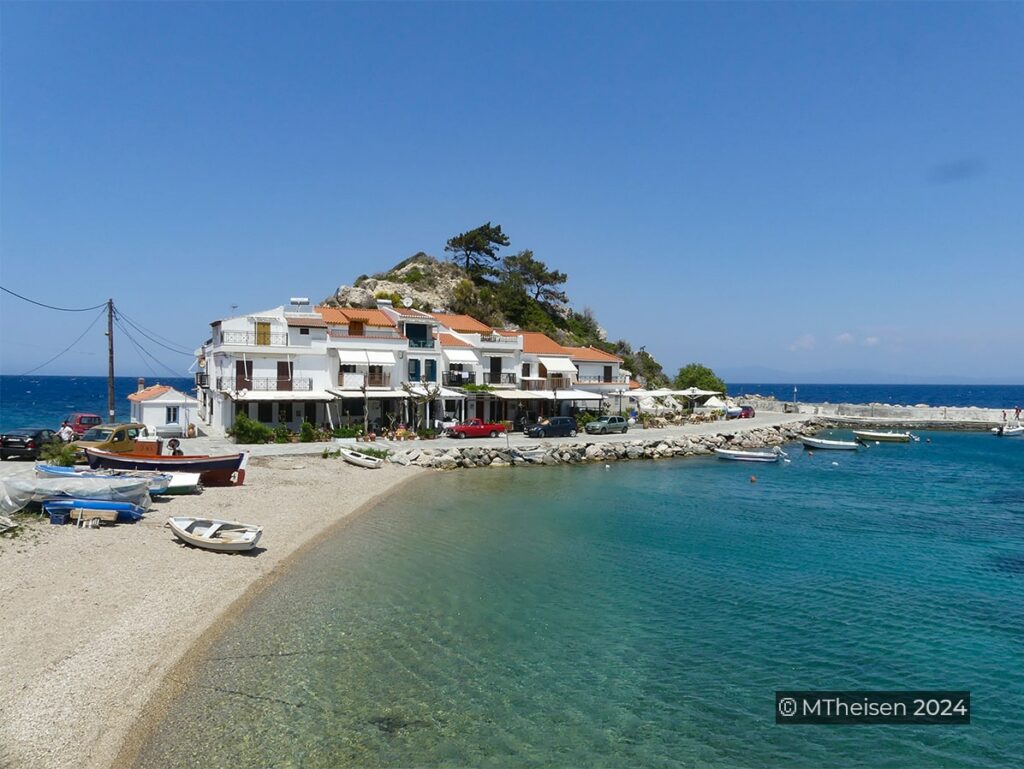
The archaeological site known as the Heraion, a complex of temples to the goddess Hera, was one of the largest of its time. Built in the 8th Century BCE, it is now a UNESCO World Heritage Site. It was believed that Hera was born on Samos, and that she and her husband Zeus had a 300 year honeymoon here.
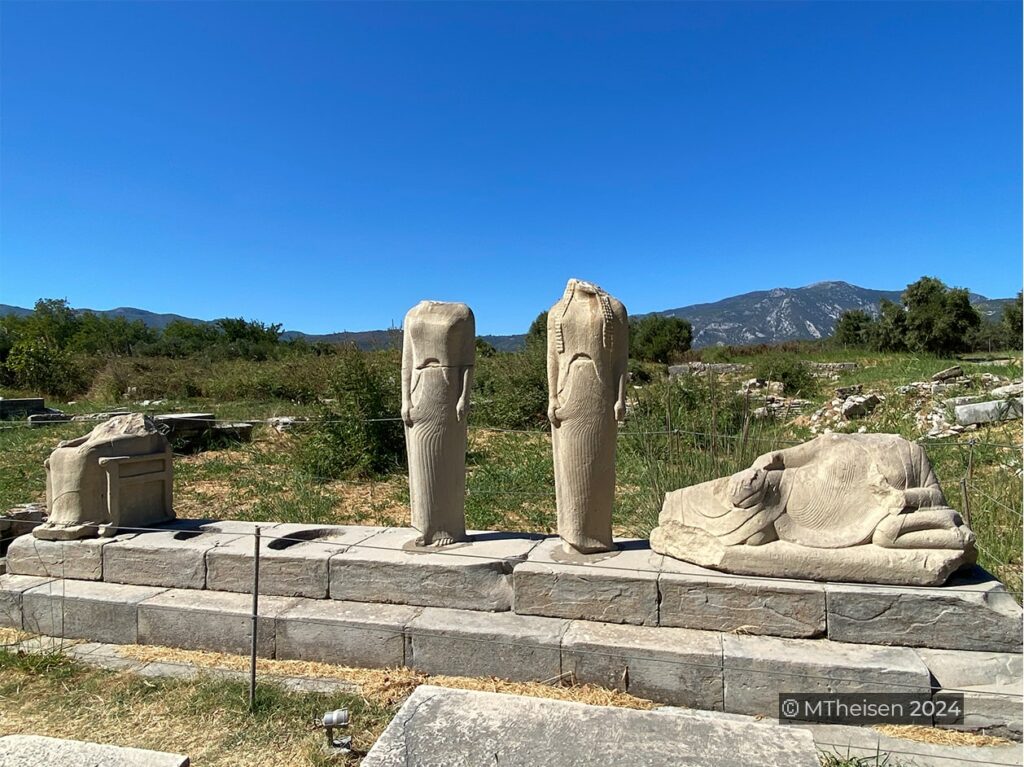
The Heraion was adorned with splendid sculptures, making Samos one of the great centers of sculpture of the Ionian world. Reproductions are there now, but some originals are at the Archaeological Museum in Vathy. The famous statue of a Kore is the most impressive. The naked figure is mostly in tact and towers 5.25 meters tall (I only reached his knees!). Another impressive grouping, the Geneleos group, features 6 figures carved into a single base. Only some remain and, like many ancient sculptures, their heads are missing.
Other archaeological sites include Roman baths, the Tunnel of Eupalinos, a Roman theater, and ancient city walls.

While I did sample Samos’ wines, which were quite good, I did not try any of their famous kid goat dishes. Check out https://visit.samos.gr/index.php/en/
Okay,we know I don’t like touristy places, but this list would not be complete without Corfu. I knew I was going to fall in love with Corfu long before I ever arrived. I was not only drawn by the splendid photos and travelogues, but I was captivated by the PBS TV series, The Durrell’s. Set in 1935, a widowed Englishwoman moves with her four children to Corfu after the family experiences a financial crisis. The comedy-drama is based on the autobiographical novel by naturalist and conservationist Gerald Durrell. The series was shot on Corfu, and the scenery was spectacular.
Also known as Kerkyra, Corfu has a fascinating history and played a strategic role in defending the region for centuries. At one time the island was one of the most fortified places in Europe. Corfu town, the capitol, was surrounded by two castles, the only city in Greece to have that feature.
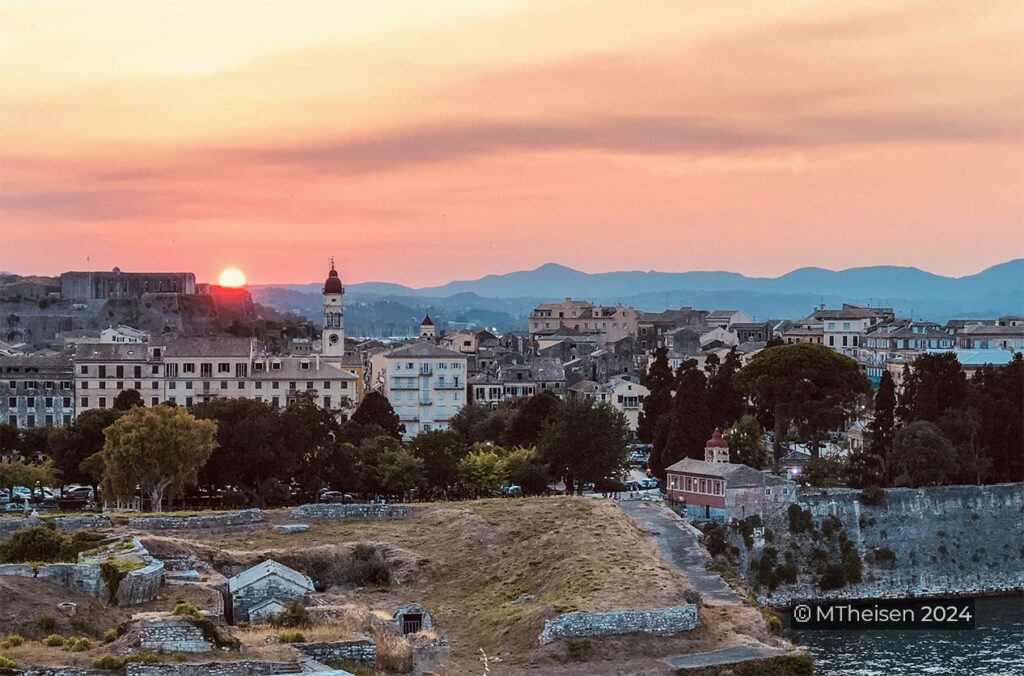
The island has it all—lowlands to the south, undulating hills in the central region, and mountains to the north. With wooded areas, beautiful beaches, farms and orchards, and historic monasteries and villages, there is something for everyone. I recommend renting a car and driving the northern region.
My many visits allowed me to see the town and island at a relaxed pace. There is no way to convey that here, so this section may read like a traditional travelogue.
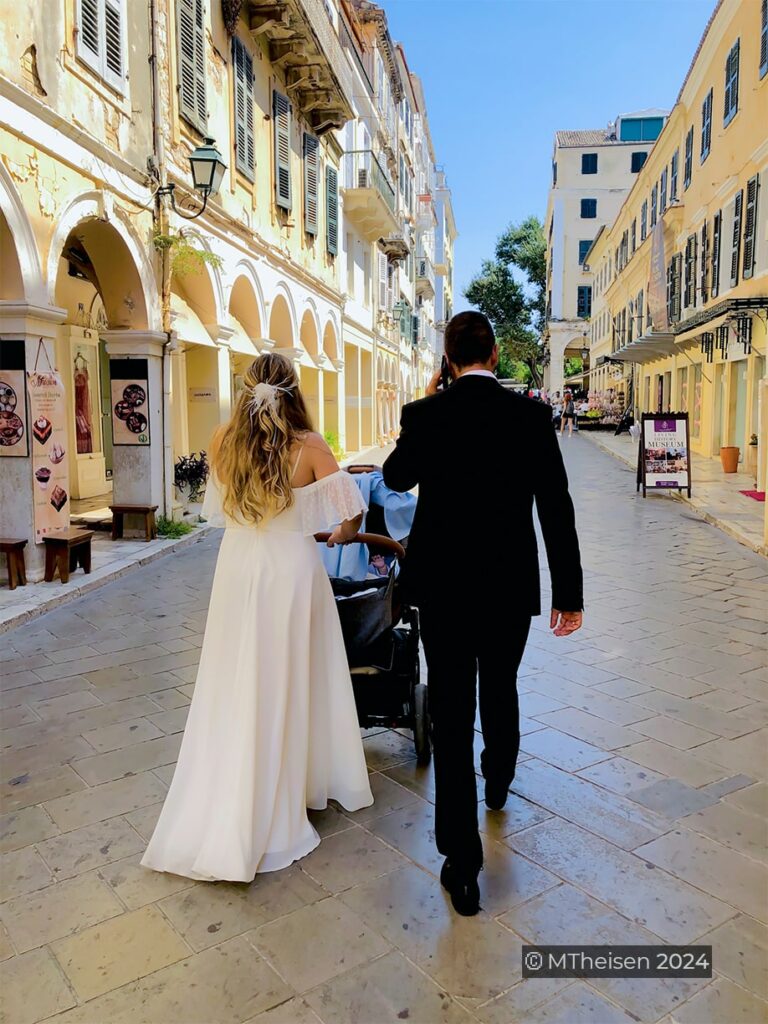
Each visit, Dico, my yacht, was kept in Mandraki Harbor, in the Old Fortress of Corfu. We never tired of walking from the beautiful town back to the high peninsular island, through the Venetian castle complex and down to the sheltered harbor and yacht club. I felt like a privileged adventurer! Adding to the fun was the fact that the former military barracks had been repurposed to a music school. There was always a cacophony of tones and rhythms to greet us, as students vocalized, practiced violins or piano, or tapped out various cadences on trap sets (drums). A lovely, dramatic esplanade connects the castle with the town.
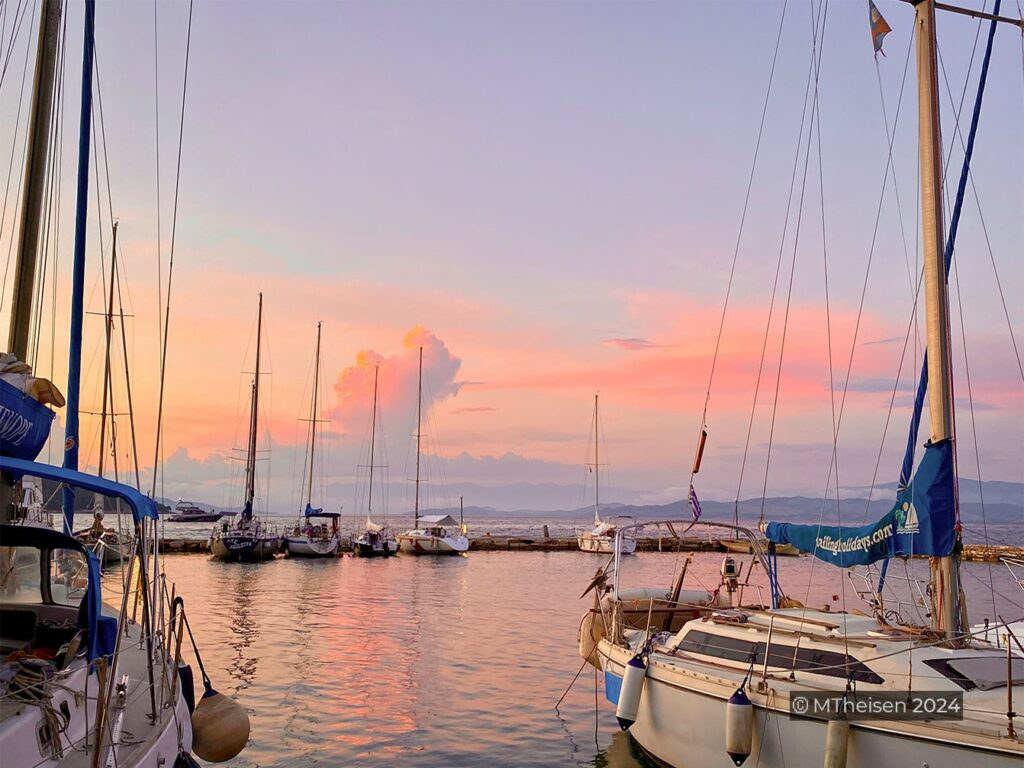
The old town of Corfu City is a UNESCO World Heritage Site. Much of the architecture is from the Venetian Era and is reminiscent of Venice, but with narrow cobblestone streets. Many of the residents appear to be more affluent than in some of the other islands, and the restaurants feature some of the finest cuisine in Greece.
The other castle complex, is sometimes called the New Fortress as it was built in the early 1800’s by the British and features medieval architecture. It is now open to the public.
Spianada is one of the largest squares in Europe, with a rotunda, music pavilion and green spaces where Cricket is played. Yes, Cricket is a British sport and Corfu was once a British protectorate.
Palais Anaktora is a palace complex built in the Roman style and housed the kings of Greece, and later the British governor. It features many buildings, a cafe and gardens with exotic trees. Its Museum of Asiatic Art is very unique and the exhibits are worth a visit.
Fulfilling my passion for Archaeology, there are many ancient ruins, including the ancient city of Korkyra (a gift of the god Poseidon to his bride during their 300 year honeymoon on Corfu), Kardaki Temple, Temple of Artemis, Temple of Hera, and Tomb of Menecrates. The Architectural Museum houses the magnificent exhibit of the huge Gorgon pediment of the Artemis temple. The pediment has been described by The New York Times as the “finest example of archaic temple sculpture extant”. Do not miss it!
I find something new every time I visit Corfu town and enjoy it so immensely I have considered moving there.
Palaiokastritsa is a hidden gem! This town in northwestern Corfu, boasts majestic cliffs overlooking a shallow turquoise bay. A monastery, built in 1225, proudly stands above the town and houses as small museum. Exquisite views from cafes above and below are unparalleled.
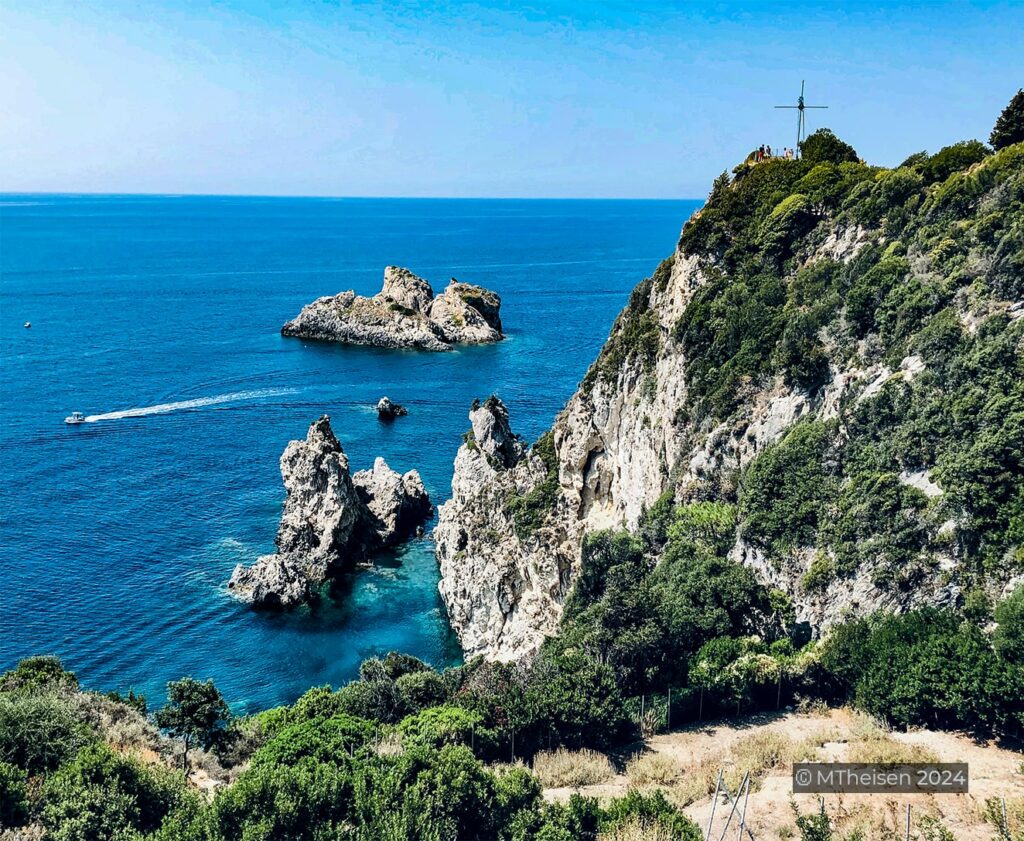

Let’s revisit the Durrell’s. The oldest son, William Durrell, a novelist had a home in Kalami Corfu. It is now a restaurant and B&B know as the White House. Of course I ate there and the food and ambience were impeccable. I also visited the house where the TV series was shot, a fun excursion!
A hike to Angelokastro, a castle high on the cliffs is a fun workout yielding amazing views. The town of Kassiopi to the northeast is quaint and picturesque.
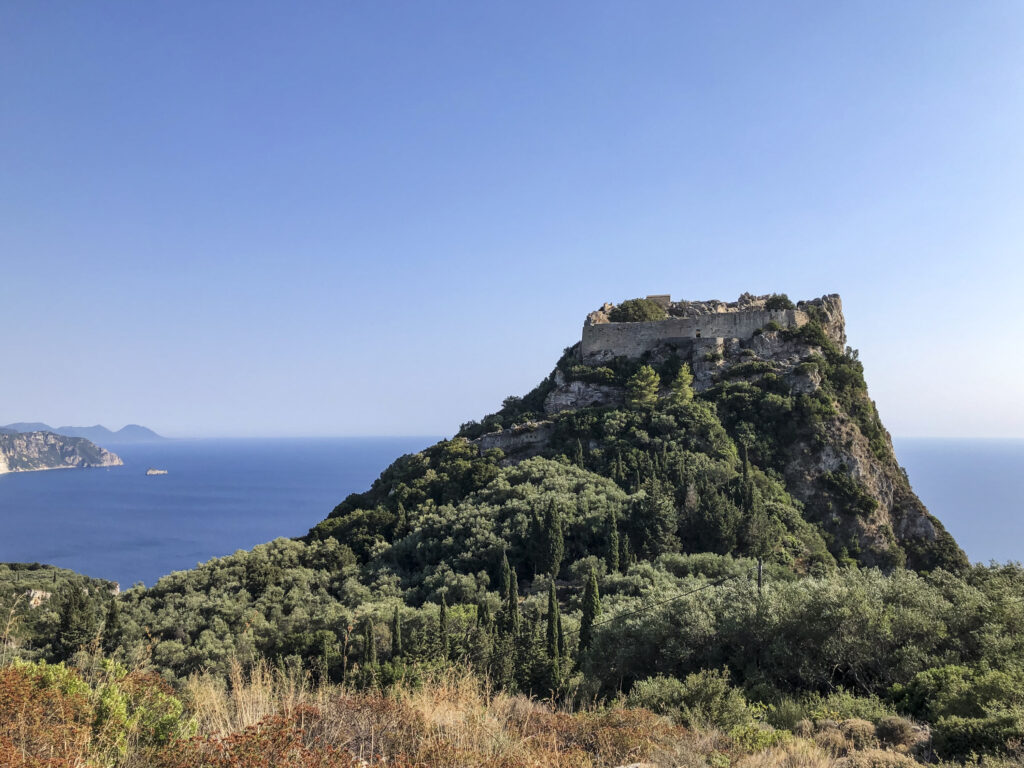
There is so much more to see and do in Corfu, you should plan on a couple of weeks to explore. https://www.visitgreece.gr/islands/ionian-islands/corfu/
Once you’ve explored some of my favorite destinations, please drop me a line and let me know what you think!
